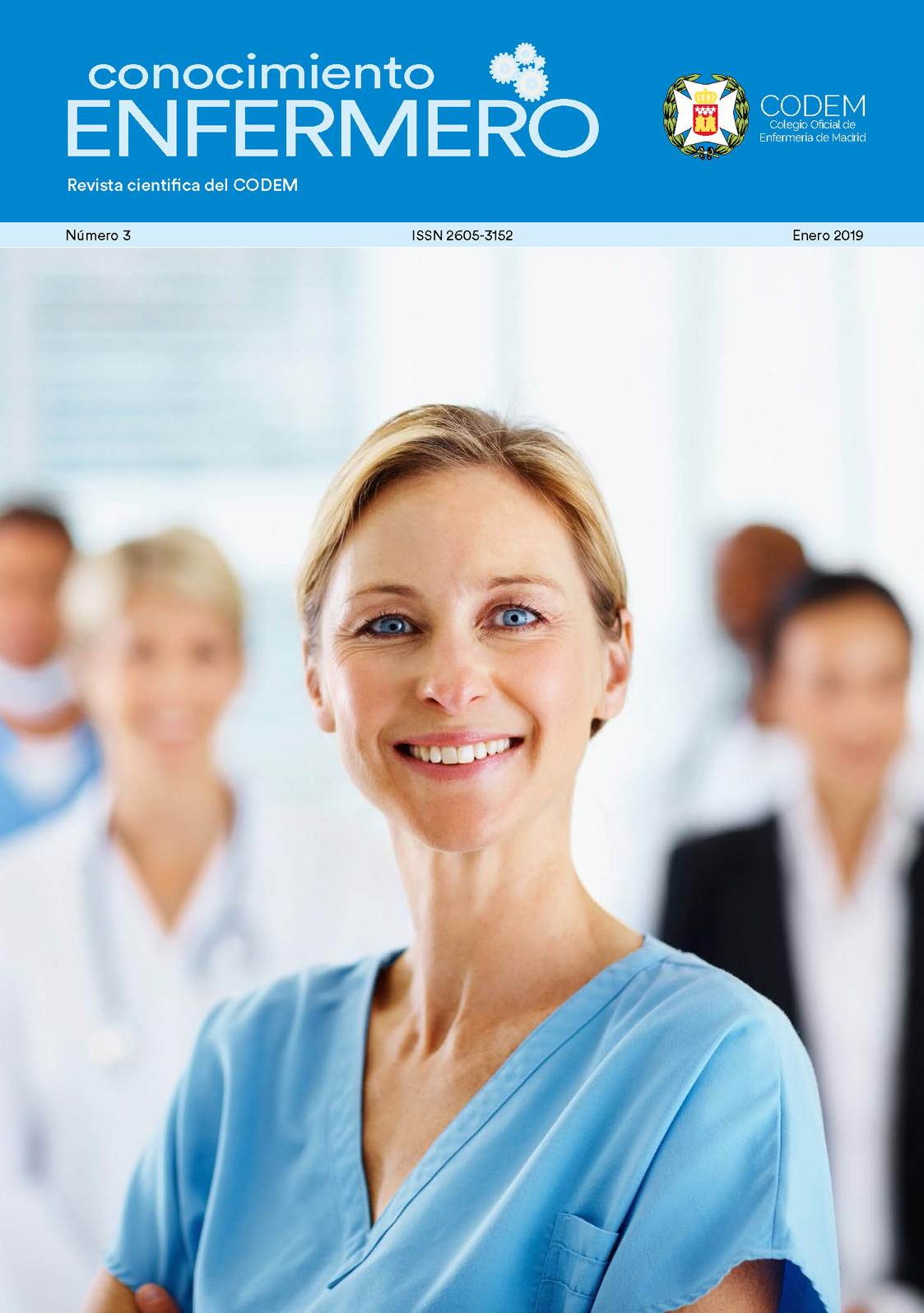Nursing's own body of knowledge through the Taxonomies of Care
Antonio Arribas Cachá
DOI:
https://doi.org/10.60108/ce.54Abstract
The publication of the 2015-2017 edition of NANDA-I, pending translation into Spanish of the 2018-20 edition, incorporates a series of new concepts and elements at the scientific, conceptual and practice application levels that I consider worth reflecting on, especially considering the great impact that its contents have on the work of nursing professionals in Spain, as it is the taxonomy of nursing diagnoses selected by our health administration for the preparation of the "Nursing Care Reports" (Royal Decree 1093/2010, of September 3, which approves the minimum set of data for clinical reports in the National Health System).
Specifically, and within the concepts reflected in the conceptual scope, I will focus on the statement that it reflects in relation to its contents, valuing them as a body of nursing knowledge, which implies the establishment of a higher level of consideration of the same.
This new valuation of the contents represents a boost in the evolution and development of this diagnostic taxonomy, which was born at first as a simple compilation, description and naming of some of the processes that nurses dealt with in their daily practice, which allowed a list to be drawn up at the first I ANA Conference in 1973.
Subsequently, this list was completed by presenting it in an orderly manner in the form of an alphabetical list of 50 nursing diagnoses at the 5th ANA Conference in 1982.
The next step was to classify, organize and structure its contents in the form of a taxonomy, generating NANDA taxonomy I at the VII Conference (1986), to establish taxonomy II in 2000 with 150 nursing diagnoses.
Well, in this 2015-2017 edition, it states that its contents are no longer considered only as a language, but actually constitute a body of nursing knowledge, a matter on which I consider it necessary to carry out a process of reflection that allows conclusions on the impact and relevance that it has on the nursing discipline itself and on professionals in their daily practice.
To this end, it is necessary to start from objective foundations that ensure that valid conclusions can be drawn. In this sense, it seems essential to begin by describing the importance of the existence and management by professionals of their own body of knowledge,
Each discipline has its own body of knowledge, which is what allows it to be identified, personalized and differentiated from other disciplines in the same area or field, so that professionals have the obligation to know it, manage it, use it and apply it regularly in their professional practice, in order to develop a consistent practice.
In the field of health disciplines, the health care of the population is provided by different health professionals, including nurses, physicians and physiotherapists. This leads to collaboration and, on occasions, even overlapping of the actions carried out by each professional, which is why each discipline must contribute its own body of knowledge to the single patient care process.
The use of the body of knowledge of a single health discipline for the health care of the population is not understood, since this would mean a loss of the level of health care, caused by the absence of an integral vision when carried out under a single health care approach or prism.
On the other hand, and in relation to the other health disciplines that do not use their own body of knowledge, it would mean the loss of the sense of their presence, with the professionals of these disciplines having to carry out technical, complementary tasks and help in the development of the only body of knowledge used for health care.
It seems, therefore, that this new conceptual evolution, together with the recognition in Spain of this taxonomy of nursing diagnoses for its use in health care practice by professionals, constitute sufficiently clarifying elements to establish the inexcusable need for nursing professionals to have a deep knowledge and management of it, which allows its use and habitual application in their daily clinical practice.
Antonio Arribas Cachá.
Additional Files
Published
Issue
Section
License
En caso de que el artículo sea publicado, los autores aceptan transferir todos los derechos del trabajo presentado, incluidos los derechos de autor y aquellos relativos a la transmisión electrónica, exclusivamente a CODEM, de manera universal, en todos los idiomas, una vez que el trabajo haya sido aceptado para su publicación dentro de la revista electrónica CONOCIMIENTO ENFERMERO.
El autor podrá hacer copias ilimitadas del trabajo para uso docente, reutilizarlo en su totalidad o parcialmente en un libro escrito por el autor o hacer copias para su distribución en la institución en la que trabaja. CODEM hará mención al nombre del autor en las publicaciones que se realicen del trabajo.


